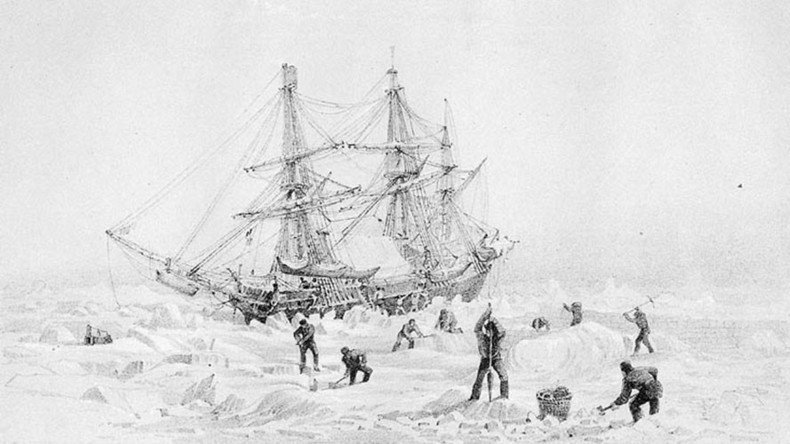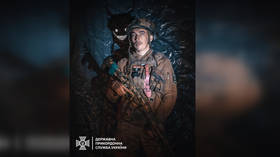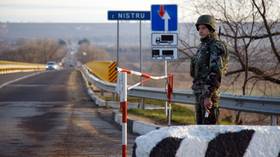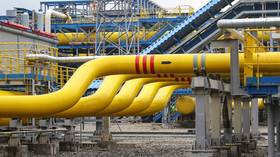Franklin’s long lost ship HMS Terror found in pristine condition in Arctic’s Terror Bay

Almost 170 years after British polar explorer Sir John Franklin’s doomed attempt to complete the Northwest passage in two warships, the second of the missing vessels – the HMS Terror has been located.
The ship was found at the bottom of the Arctic, in the aptly named Terror Bay. The expedition, led by Captain Sir John Franklin, had departed England in 1845 in search of the Northwest Passage.
Searches have been ongoing for years for the HMS Terror, after it sank with the HMS Erebus during the Royal Navy expedition in 1848, in an attempt solve one of polar exploration’s greatest mysteries.
All 129 men died after the ships became trapped in ice but no traces of the shipwrecks were found despite continuous searches for eleven years after the disaster.
Found! Sir Franklin's #HMSTerror in the #Arctic, not far from its sister ship, HMS Erebus. Stay tuned. https://t.co/Pnln33SW3O
— OneOceanExpeditions (@OneOceanExp) September 12, 2016
The HMS Terror was located on September 3 and re-entered for the first time Sunday by the Arctic Research Foundation who used a remotely operated vehicle to captures images of the interior, frozen in time for 168 years.
“We have successfully entered the mess hall, worked our way into a few cabins and found the food storage room with plates and one can on the shelves,” Adrian Schimnowski, the foundation’s operations director, told the Guardian by email from the research vessel Martin Bergmann.
“We spotted two wine bottles, tables and empty shelving. Found a desk with open drawers with something in the back corner of the drawer.”
Kudos to Arctic Research Foundation team for finding HMS Terror. Historians must rethink Franklin mystery. #cdnpolihttps://t.co/xHhCeP467k
— Paul Watson (@wherewarlives) September 12, 2016
The perfectly preserved wreck matches the description of the Terror in several important areas but was discovered 60 miles (96km) south of where experts had long believed it rested.

If this really is the #HMSTerror, it’s 100 km south of where experts thought it would be. https://t.co/zJovs9F4Nu
— Alexandra Witze (@alexwitze) September 12, 2016
The massive shipwreck was found in the middle of King William Island’s uncharted Terror Bay in Nunavut by the 10 men Bergmann crew. Her three masts were broken but still standing, almost all hatches were closed and everything was stowed, according to The Guardian
The crew were about to leave the bay when a grainy digital silhouette was detected on the sounder display on the bridge of the Bergmann, leading to the remarkable find.
Before it was rebuilt as an Arctic exploration vessel, HMS Terror had been a bomb ship used by the British Navy in the 1814 Battle of Baltimore – the event that inspired the US national anthem, The Star Spangled Banner.
Franklin's #HMSTerror, found in the Arctic, had bombed Fort McHenry in battle that inspired #StarSpangledBannerpic.twitter.com/AIRWtcYCsW
— Nebojsa Malic (@NebojsaMalic) September 12, 2016
A wide exhaust pipe rising above the outer deck proved crucial in identifying the ship as the HMS terror, according to Schimnowski, who told The Guardian it was in “the precise location where a smokestack rose from the locomotive engine which was installed in the Terror’s belly to power the ship’s propeller through closing sea ice”.
The wreck lies on the seabed about 24 meters (80ft) down in pristine condition. The glass panes are still in three of four tall windows in the stern cabin where the ship’s commander, Captain Francis Crozier, slept and worked, Schimnowski explained.
The story that led the Bergman crew to Terror Bay is equally fascinating. An Inuit crewman told a story to Schimnowski explaining generations of Inuit believed spirits began wandering King William Island after Franklin and his crew perished, sparking the team to search that area.
The location and state of #HMSTerror completely consistent with #Inuit testimony, although that tradition did no record her exact location.
— Russell Potter (@SJFranklin_1845) September 12, 2016
The HMS Terror discovery paves the way for historians to rewrite the accepted historical narrative and piece together the last moments of the desperate sailors who died in the tragedy.
“This discovery changes history,” Jim Balsillie who founded the Arctic Research Foundation told the Guardian. “Given the location of the find [in Terror Bay] and the state of the wreck, it’s almost certain that HMS Terror was operationally closed down by the remaining crew who then re-boarded HMS Erebus and sailed south where they met their ultimate tragic fate.”
The HMS Erebus was located two years ago by a team led by government agency Parks Canada in an area of the eastern Queen Maud gulf. The information that led to the discovery was also guided by the oral history of the Inuit people.












